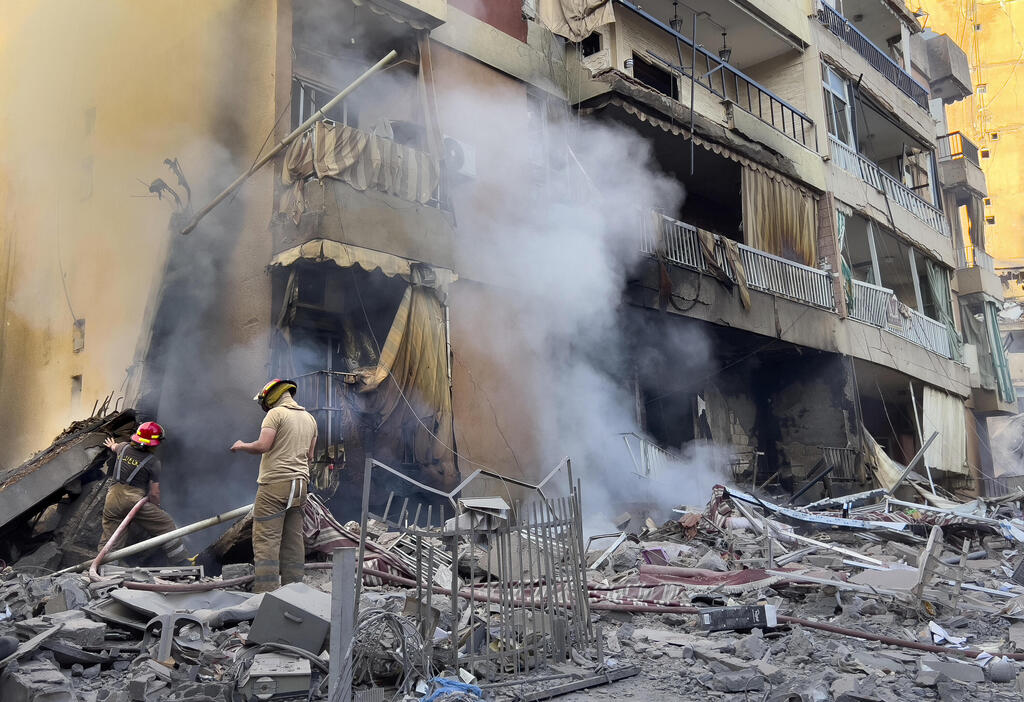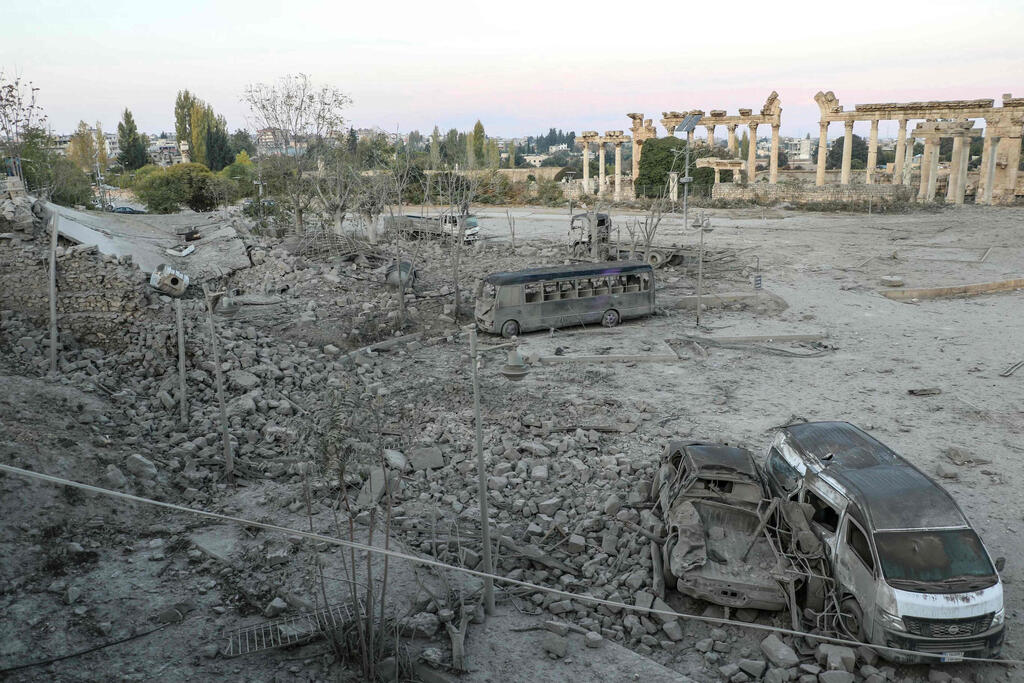Getting your Trinity Audio player ready...
Rocket fire from Lebanon toward northern Israel has persisted in recent days, sometimes reaching central Israel and the Sharon region, but the IDF reported Thursday that daily rocket averages have dropped to below 100, down from over 150.
The IDF attributed the decrease to intensified military pressure on Hezbollah’s launch capabilities, including targeted strikes on rocket launchers and firepower resources.
Israeli strikes in Beirut's Dahieh district
On Monday’s "Martyr’s Day," Hezbollah claimed responsibility for 200 launches, while by 6 p.m. Thursday, it had taken responsibility for 18 separate attacks. The IDF said that since ground operations began, over 2,250 Hezbollah fighters, including several high-ranking commanders, have been killed, impacting the group’s ability to launch attacks.
Israeli forces have faced heavy losses since the start of the ground incursion into Lebanon, with 67 killed, including 16 civilians and 51 soldiers—41 of whom died in Lebanese territory. "We had five encounters with Hezbollah fighters since yesterday," the IDF reported on Thursday. "We are coordinating military moves with diplomatic efforts, which is crucial."
The IDF highlighted the complexity of combat in built-up areas and emphasized ongoing lessons learned to reduce casualties. Most current ground activity is within five to six kilometers of the Lebanese border, in western and eastern sectors of southern Lebanon.
Hezbollah rockets intercepted over Haifa
(Video: Udi Buch, United Hatzalah )
"Hezbollah incursions into northern Israel could persist for years," IDF officials warned. The military clarified that ground forces are targeting underground complexes housing advanced weaponry, where airstrikes alone may achieve only partial success. "We may not eliminate every threat, but we’re advancing well," the IDF added.
Energy Minister Eli Cohen, in an interview with Reuters, said that Israel is closer than ever to reaching an agreement to end fighting in Lebanon and push Hezbollah away from the border, while insisting that Israel maintains the right to act military should it be violated.
A key sticking point for Israel, he said, is ensuring it retains freedom of action should Hezbollah return to border areas.
"We will be less forgiving than in the past over attempts to create strongholds in territory near Israel. That's how we will be, and so that is certainly how we will act."
In terms of a mechanism to enforce the agreement, Cohen said: "There are discussions, but it has not been agreed upon."
An Israeli official familiar with ongoing cease-fire negotiations said Thursday that progress is being made, but cautioned that a resolution remains uncertain. “We’re closer than we were yesterday, but not near enough to say it will end very soon,” the official noted, adding that military assessments remain a factor, with decisions hinging on whether to "end hostilities now" or after clearing Hezbollah strongholds in southern Lebanon. He further said that officials aim to finalize the agreement before U.S. President-elect Donald Trump assumes office in January.
Meanwhile, the World Bank reported Thursday that Lebanon’s war damages from the year-long conflict now exceed $8 billion, with almost 100,000 homes damaged or destroyed.
According to the report, covering the period from October 2023—when Hezbollah joined Hamas in attacks on Israel—through October 2024, at least 99,209 residential units were impacted, primarily in southern Lebanese regions like Tyre, Nabatieh, Sidon, Bint Jbeil and Marjayoun.
The World Bank’s analysis placed losses from damages to sectors like tourism and agriculture at $5.1 billion and destruction to infrastructure at an additional $3.4 billion. The final economic toll is expected to be significantly higher, compounding Lebanon's ongoing economic crisis, which has pushed most of its population below the poverty line since 2019.
Lebanon also faces a growing displacement crisis, with approximately 1.6 million residents forced from homes situated in Hezbollah-occupied areas in southern Lebanon due to IDF operations.
Get the Ynetnews app on your smartphone:







